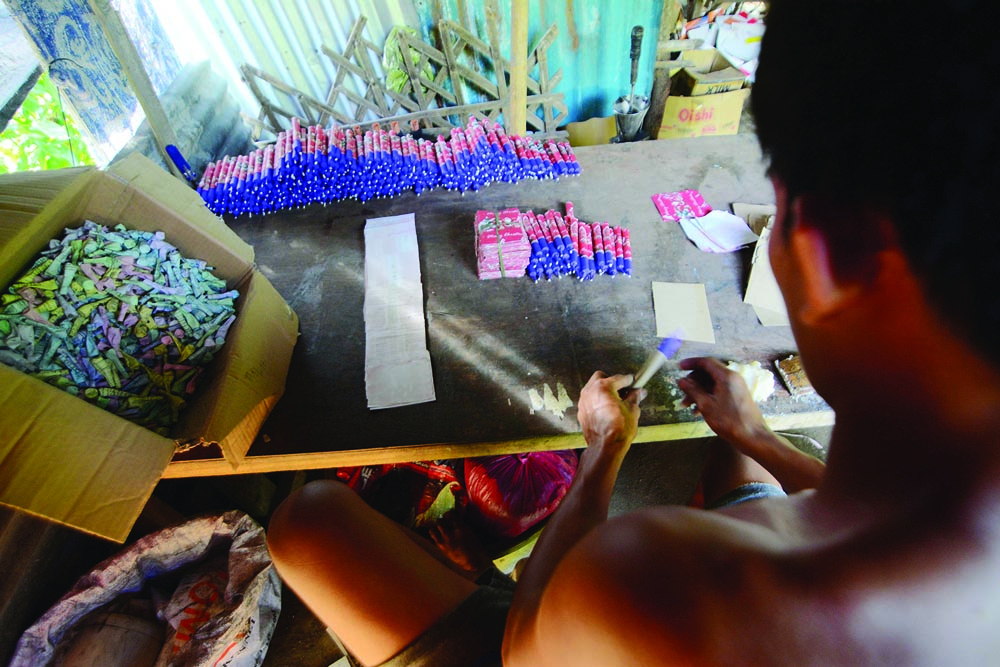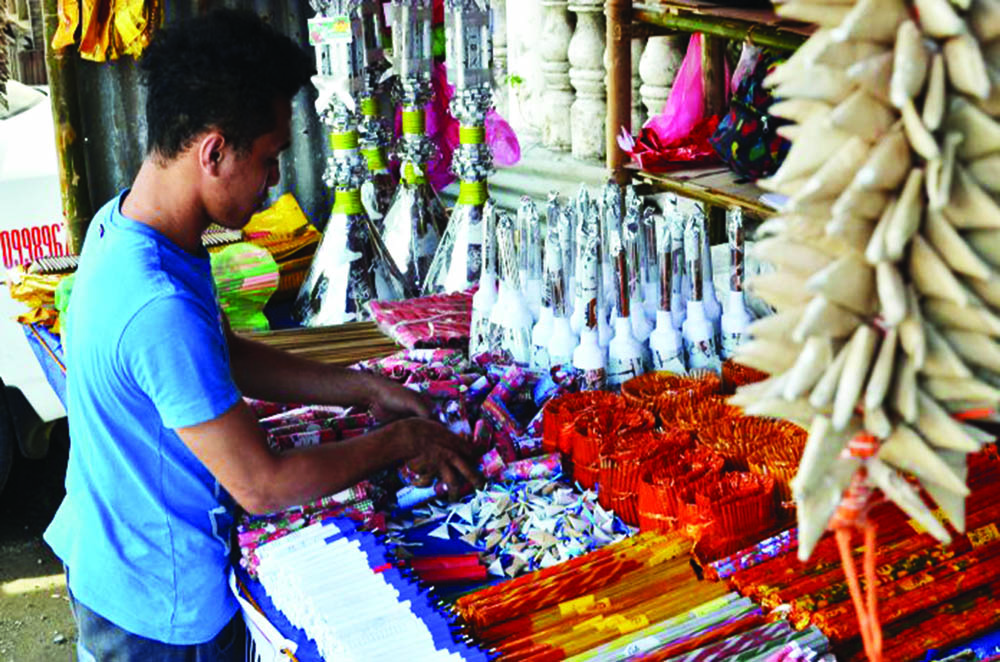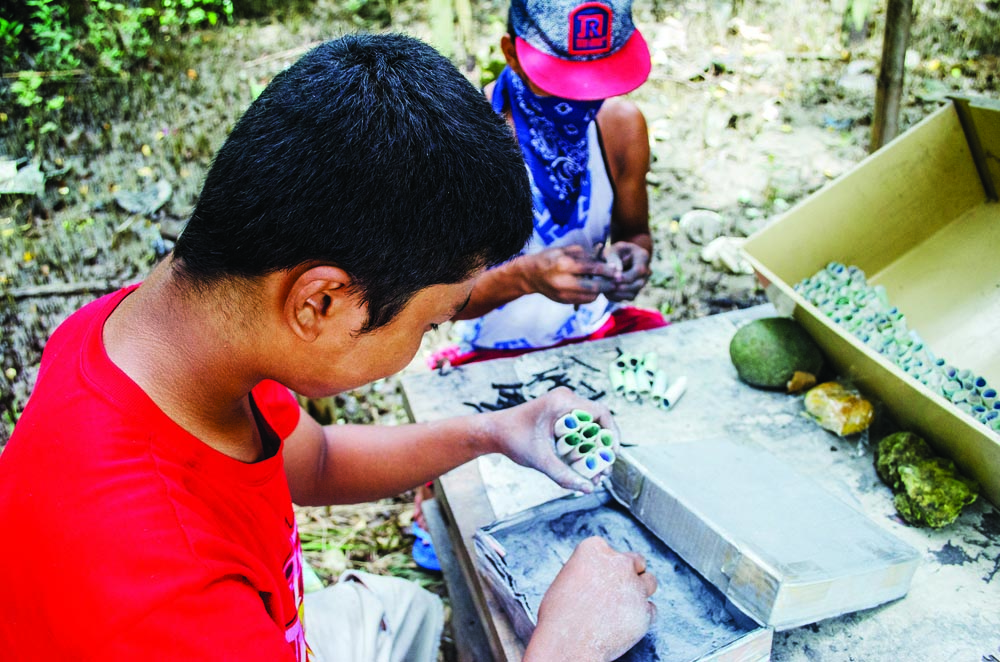SHOULD there be a ban on firecrackers?
Manong Onyok of Arevalo, Iloilo City hopes not. He has been making firecrackers these past 35 years.
“Firecrackers are my sole source of income,” he tells Panay News in Hiligaynon.
Setting off firecrackers during the holiday season, especially when welcoming the New Year, is an age-old Filipino tradition. Without this, the celebration seems incomplete. For the enterprising manufacturers, it is a good source of income.

The district of Arevalo is dubbed the “firecracker capital” of Iloilo. This is where most of the firecrackers in this part of the country are manufactured, many in humble backyards.
This cottage industry has sustained lots of poor families like Manong Onyok’s. Many thus got upset when it was reported that President Rodrigo Duterte may order a nationwide ban on firecrackers.
Already, says Manong Onyok, “gamay lang gid amon income.” A total ban would be like snuffing the life out of them.
Because local authorities are very stringent with requirements, many firecracker manufacturers, especially the small ones, have resorted to guerilla-like operations.
“Subong patago ‘ni amon ubra,” says Manong Onyok. He admits being anxious about getting caught.
Yes, he says, he and his small band of workers understand why authorities are strict and they know, too, the safety risks in this kind of livelihood. But going hungry or penniless is not an option.
“Kinahanglan lang gid maghalong. Kun wala ka gahalong, te dali ka gid madisgrasya,” says Manong Onyok.
Firecrackers are generally made of cardboard or plastic, with flash powder, cordite, smokeless powder or black powder as propellant. This is not always the case, however. Anything from match heads to kerosene and lighter fluid has been used successfully in making firecrackers. The key to loud firecrackers, however, although in part lying in the propellant substance, is pressure. The entire firecracker must be very tightly packed in order for it to work best.

So how do Manong Onyok and his crew do it?
“Gatimpla ka pulbura gagmay-gagmay lang, indi gid tingob nga damo-damo,” he says.
Beside them are pails of water so that “inkaso may sunog, mapalong namon dayon,” he explains.
According to Manong Onyok, their work area is also far from houses.
During “peak season”, which is the holiday season, he says he could rake in as much as P60,000 profit from a capital of P30,000.
“I hope and pray the government won’t totally ban firecrackers. It could regulate its use and manufacturing, yes, but not a ban. This is my sole Christmas wish,” says Manong Onyok. “Dako ini nga bulig sa amon.”
One of his crew, 24-year-old Nonoy, agrees. He has been making firecrackers these past four years.
“It was initially tough but I eventually got the hang of it,” he says.
His earnings depend on how many firecrackers he could make during the season.
“Last year, naka-income ako P2,000 sa isa ka bulan. Sa isa ka adlaw mga 1,500 man ka whistle bomb ma–ubra ko,” Nonoy tells Panay News.

Yes, he says, it is his wish, too, that authorities won’t be too strict with small-time firecracker manufacturers.
“We know the risks so we are doubly careful. We don’t want anything bad to happen to us and we do not want to inconvenience other people, too,” he said in Hiligaynon.
Manong Onyok’s other crew member is 24-year-old JP. His assignment these past two years is prepare the paper casings of the firecrackers.
He knows the health risks in this kind of livelihood so he is very careful. He wears face mask so as not too inhale the fine particles of firecracker ingredients.“Tani indi lang pag i-bawal ni President ang pag ubra kag gamit ka palupok. Sa isa ka tuig kaisa man lang ta mag-celebrate New Year. Kulang sang celebration kun wala palupok,” he says./PN




